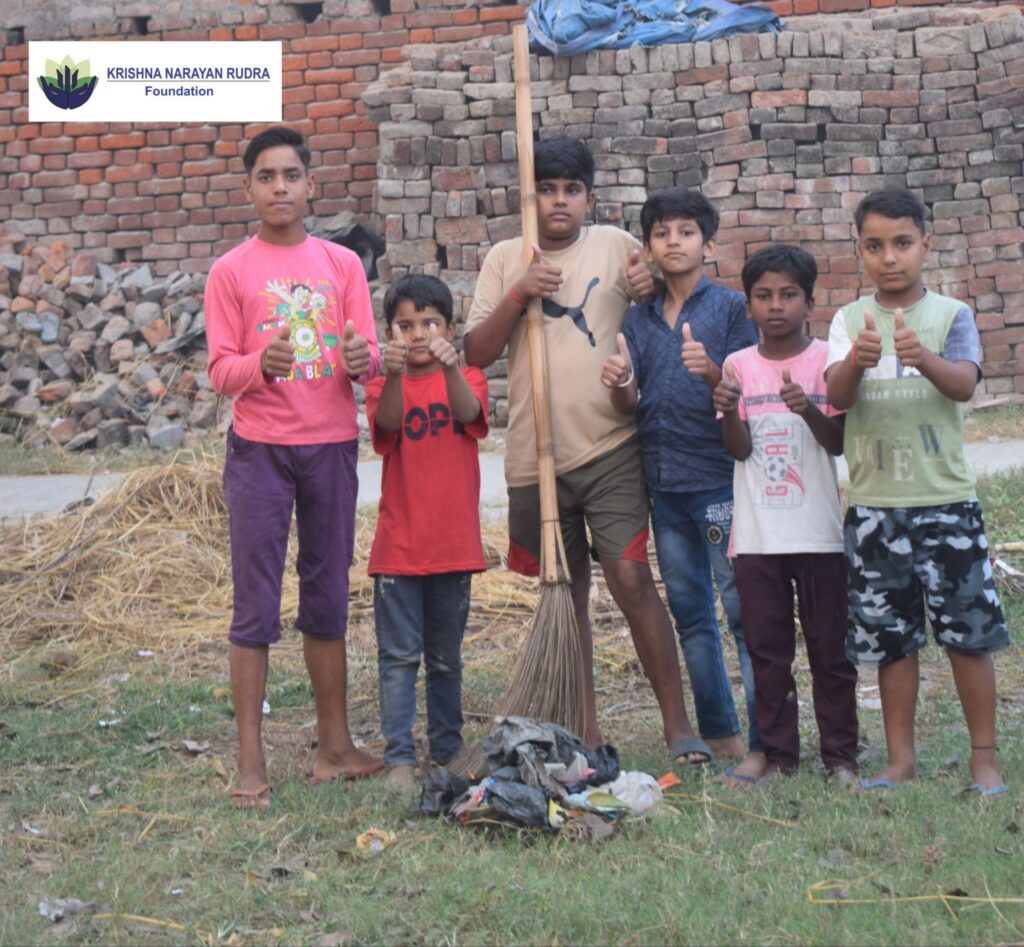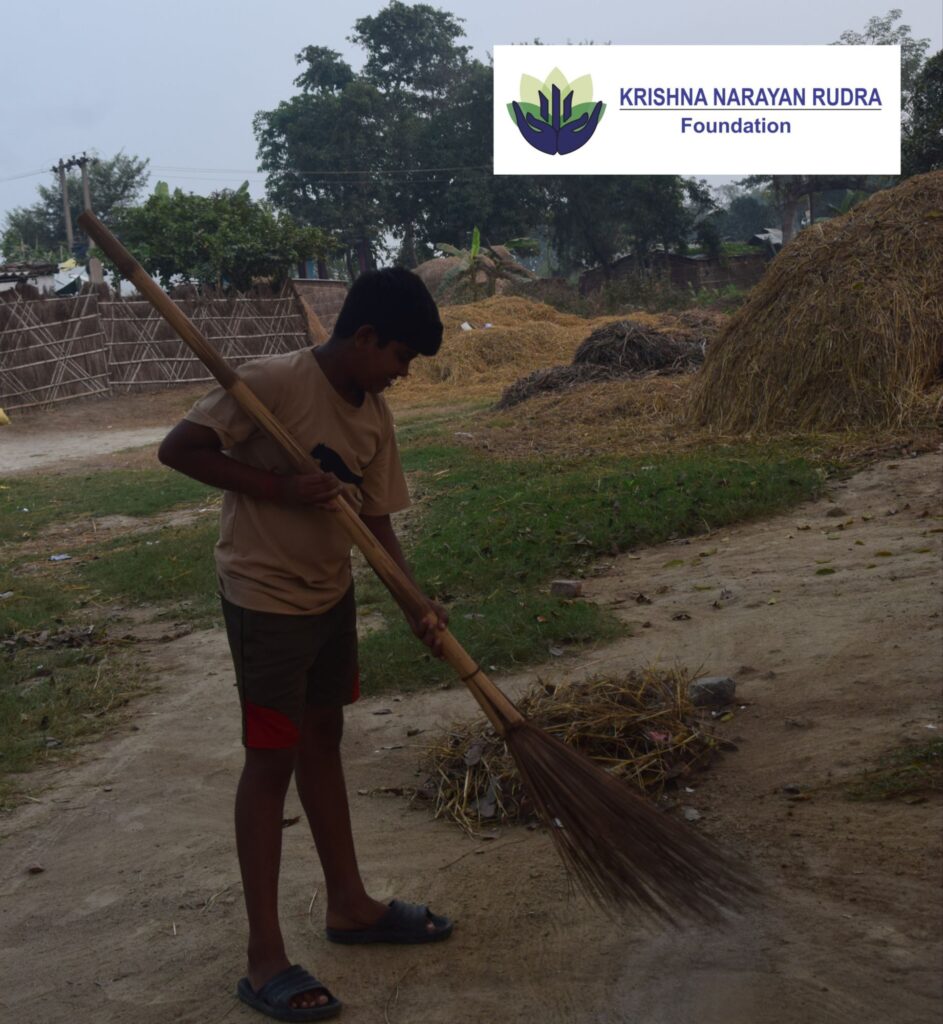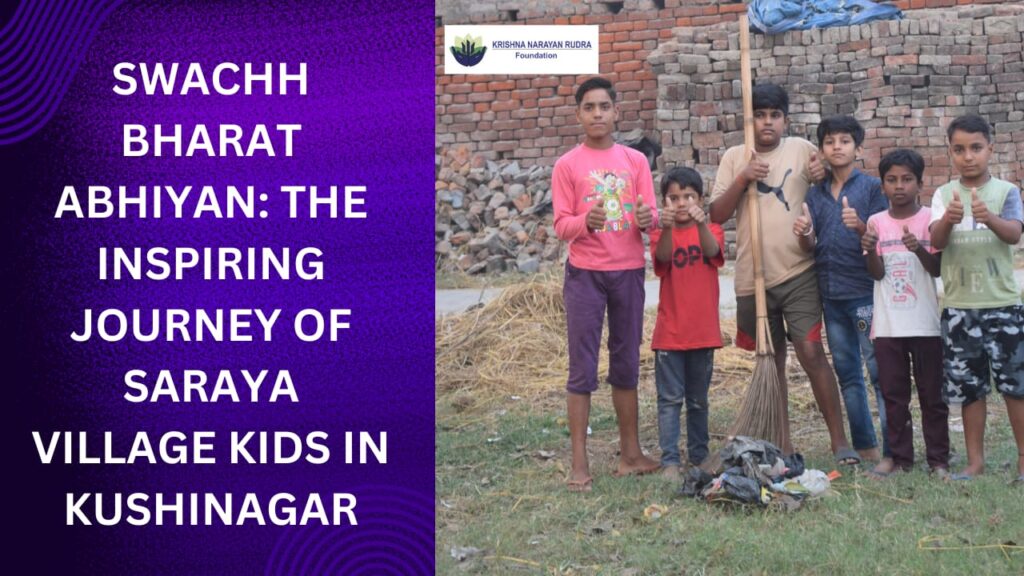India’s Swachh Bharat Abhiyan, launched under the leadership of Prime Minister Narendra Modi, has transformed into a national movement for cleanliness and sustainable living. However, the strength of this mission lies in the countless individuals and communities across the country who have actively embraced its vision. Among these, the children of Saraya village in Kushinagar, Uttar Pradesh, stand out as shining examples of grassroots leadership. These young changemakers have not only adopted the principles of cleanliness but have also become champions of spreading awareness and creating a ripple effect of change in their village.

The Young Heroes of Saraya Village
The children of Saraya, though young in age, have displayed remarkable dedication and awareness about their role in ensuring a cleaner and healthier environment for their village. Inspired by the ideals of the Swachh Bharat Abhiyan, these kids took it upon themselves to bring about visible change in their surroundings.
Key Activities and Initiatives
1. Cleaning Drives in the Village
a. These children started by organizing regular cleanliness drives, armed with basic cleaning tools and an unwavering sense of purpose.
b. They cleaned public spaces, streets, and areas around their homes, ensuring that the village was free of litter and waste.
2.Interactive Awareness Programs
a. Recognizing the importance of education, the kids conducted informal sessions for villagers to explain the harmful effects of improper waste disposal and the necessity of adopting waste segregation.
b. They made use of simple language, visual aids, and relatable examples to effectively communicate their message.
3. Waste Segregation Advocacy
a. A major focus of their initiative was teaching villagers how to segregate biodegradable and non-biodegradable waste.
b. They stressed the long-term benefits of segregation, including easier recycling, reduced pollution, and better waste management practices.
4. Sustainable Living Campaigns
a. The children actively promoted the use of eco-friendly products and alternatives to single-use plastics.
b. They encouraged their families and neighbors to adopt practices like composting organic waste and using cloth bags instead of plastic.
5. Community Dialogues on Swachh Bharat Abhiyan
a. The kids held meetings where they explained the broader goals of the Swachh Bharat Mission, making villagers aware of government efforts and programs supporting sanitation and waste management.
b. They shared how cleanliness and hygiene directly impact health, dignity, and the environment, emphasizing the mission’s role in transforming rural India.
The Impact of their Efforts
The collective efforts of these children have had a profound impact on Saraya village:

1. Visible Cleanliness
a. Streets and public areas that were once littered with waste now reflect the hard work of these young volunteers.
b. The village has become an example of how consistent effort can lead to cleaner surroundings.
2. Behavioral Changes in Villagers
a. The children’s awareness sessions have inspired many villagers to adopt better waste disposal habits.
b. Households have started practicing waste segregation and making use of composting techniques.
3. Community Involvement:
a. The children’s efforts have encouraged other members of the community to join the cleanliness drives, creating a sense of collective responsibility.
b. Their leadership has united the village under a common goal, fostering a stronger sense of community.
4. Inspiring Other Villages
The efforts of Saraya Padrona’s kids have caught the attention of neighboring villages, inspiring them to initiate similar cleanliness drives and adopt eco-friendly practices.
The Role of Government and Swachh Bharat Abhiyan
The children’s work ties closely to the larger goals of the Swachh Bharat Abhiyan, which has seen unprecedented success across India since its launch.
1. Building Toilets and Eradicating Open Defecation
a. Over 100 million toilets have been constructed under the mission, significantly reducing open defecation in rural areas.
b. Villages like Saraya Padrona have also benefited from these efforts, with the kids advocating for proper use of household toilets and maintaining hygiene.
2. Waste Management and Sanitation Infrastructure
a. The mission has focused on building infrastructure for waste collection and segregation.
b. The children have played a crucial role in raising awareness about these facilities and ensuring they are utilized effectively by the community.
3. Behavioral Change Campaigns
a. One of the mission’s key objectives has been to change attitudes toward sanitation and cleanliness.
b. The Saraya Padrona kids have become true ambassadors of this change, using their voices to spark conversations and action at the grassroots level.
4. Empowering Grassroots Movements
a. The Swachh Bharat Mission has encouraged local leadership and community participation, as seen in Saraya Padrona.
b. The children’s initiative is a testament to the mission’s power to inspire individuals and groups to take ownership of their surroundings.
Lessons from Saraya Children
1. Leadership Can Begin Early
Age is no barrier to making a difference. These kids have shown that determination and initiative can lead to significant change.
2. Small Actions Lead to Big Results
From sweeping streets to advocating waste segregation, the children’s small but consistent efforts have had a transformative impact on their village.
3. The Power of Awareness
Educating people about cleanliness and sustainability can lead to lasting behavioral changes, as demonstrated by the kids’ effective awareness programs.
4. Collective Responsibility Matters
The children have instilled a sense of responsibility in their community, proving that cleanliness is a shared duty.
Conclusion: A Model for India
The children of Saraya village are shining examples of the Swachh Bharat Abhiyan’s potential to transform lives. Their dedication and innovative approach to promoting cleanliness and sustainability highlight the power of grassroots leadership.
As citizens, we must take inspiration from these young leaders and join hands to fulfill the vision of a Swachh Bharat, Swasth Bharat (Clean India, Healthy India). Let their efforts remind us that even the smallest actions can contribute to building a cleaner, greener, and more prosperous future for India.



